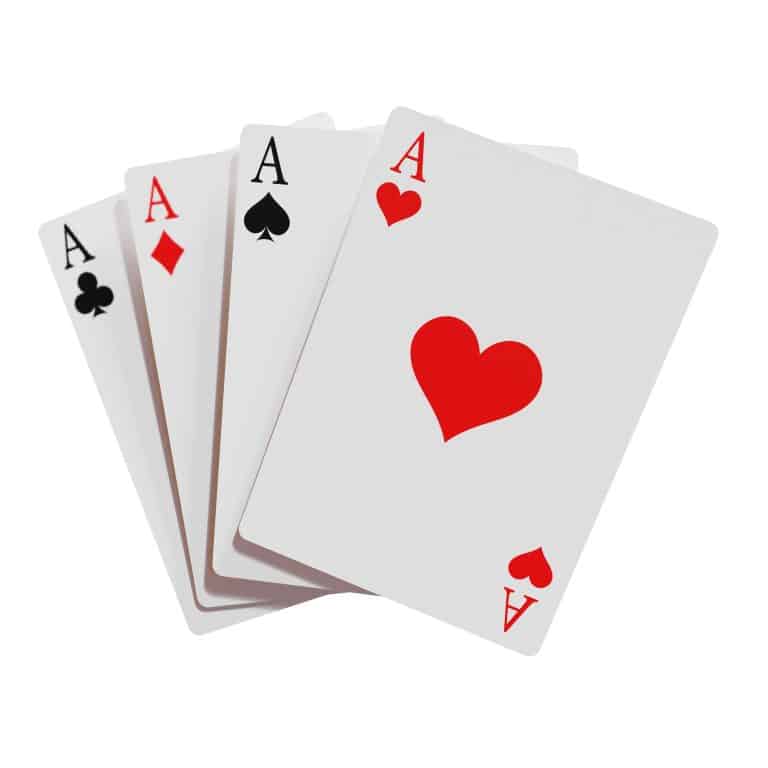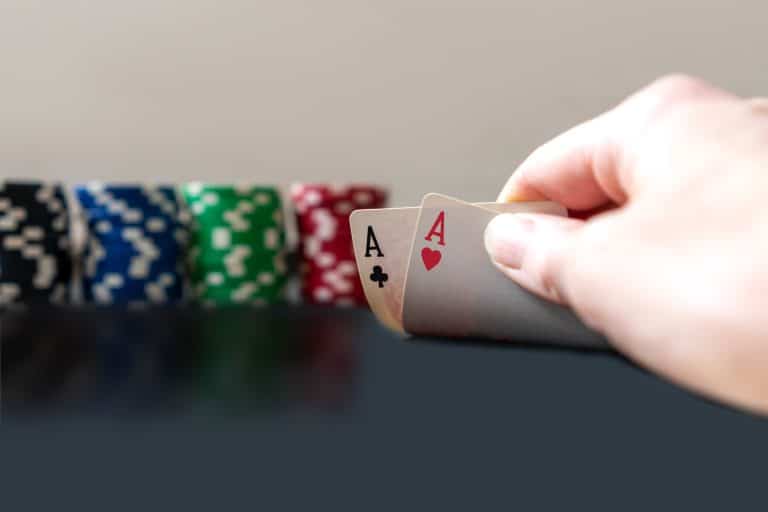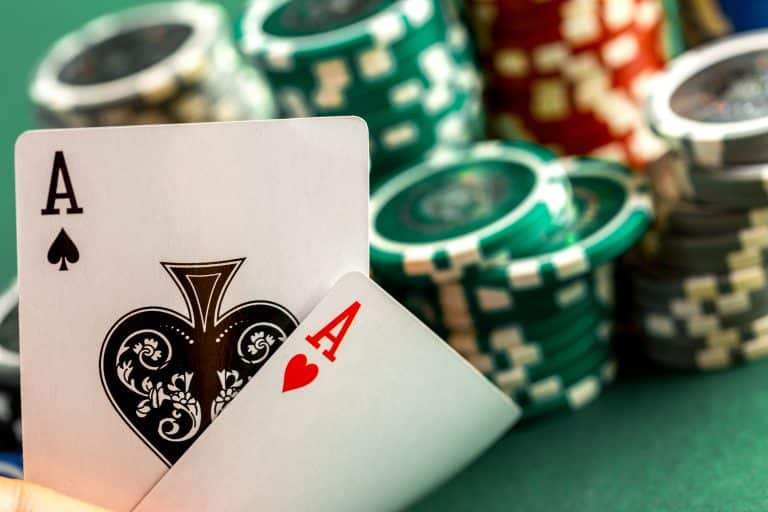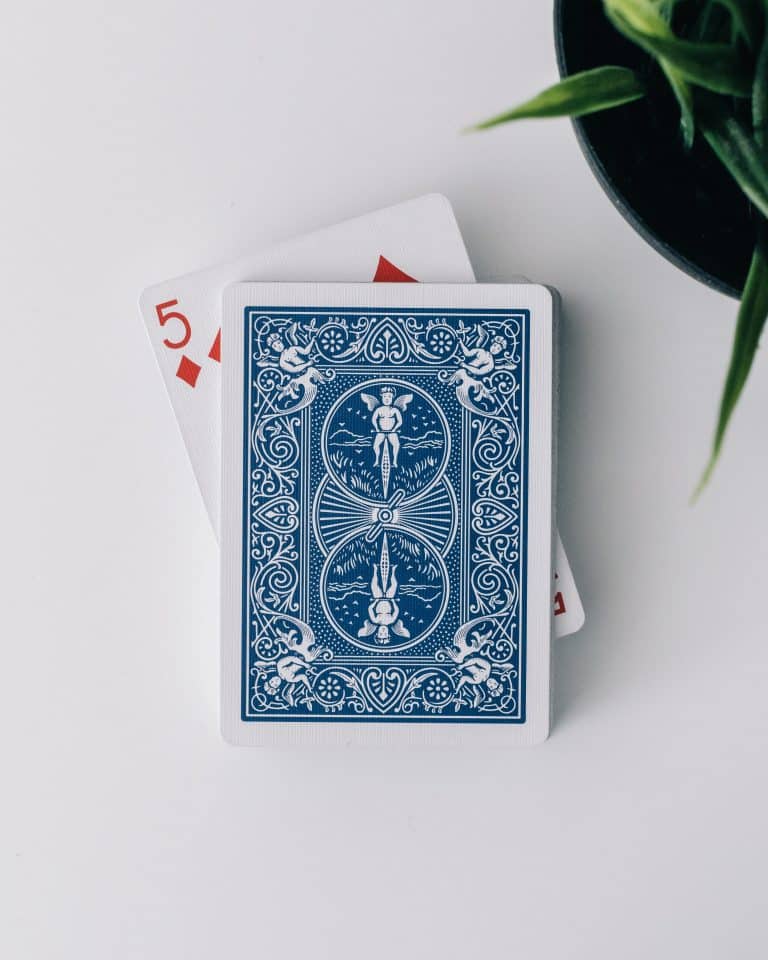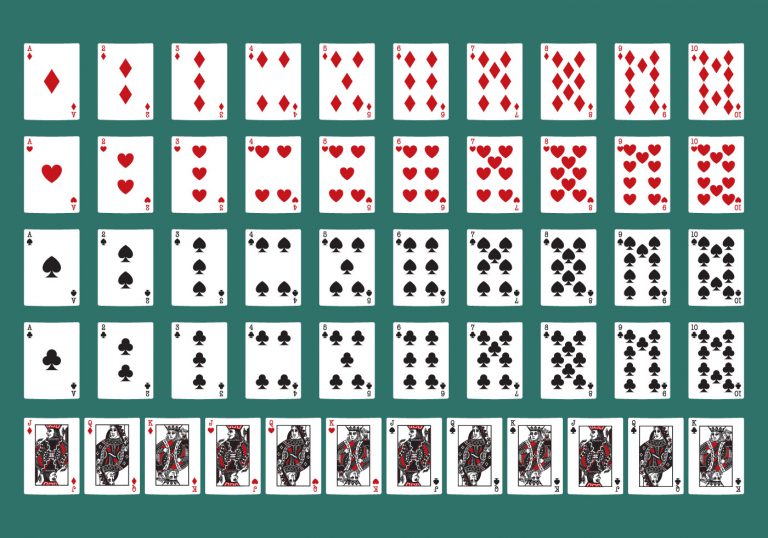Poker is a game of skill, strategy, and luck. While many players focus on perfecting their game strategy and mastering the odds, the art of card handling is often overlooked. Proper shuffling, dealing, and manipulation of cards can have a significant impact on the outcome of a game. In this blog, we’ll explore the techniques involved in card handling and how players can master them to improve their gameplay. From the basics of shuffling to the advanced techniques of card manipulation, we’ll provide step-by-step guides and tips for improving your card handling skills. Whether you’re a beginner or a seasoned player, this blog will help you understand the importance of card handling in poker and how to master it.
The Basics of Card Shuffling
The shuffle is an essential part of card handling in poker. It randomizes the order of the cards and ensures a fair game. There are several types of shuffles, each with its advantages and disadvantages.
Riffle Shuffle:
The riffle shuffle, also known as the weave shuffle, is the most popular shuffle in poker. It involves dividing the deck into two halves and riffle shuffling them together. This technique creates a smooth shuffle and allows for a quick and efficient shuffle. However, it can be difficult to master and may damage the cards if done incorrectly.
Overhand Shuffle:
The overhand shuffle is the most basic shuffle in poker. It involves taking small packets of cards from the top of the deck and shuffling them into the bottom. This shuffle is easy to perform and is often used as a warm-up before performing more complex shuffles. However, it is not as effective as other shuffles in randomizing the order of the cards.
Hindu Shuffle:
The Hindu shuffle, also known as the Indian shuffle, involves shuffling the cards from hand to hand. It is often used in games where the dealer’s position rotates around the table. This shuffle is easy to perform and allows for a slow and deliberate shuffle. However, it is not as efficient as other shuffles and can be time-consuming.
Stripping:
Stripping involves taking small packets of cards from the top of the deck and shuffling them into the bottom. This technique is similar to the overhand shuffle but involves taking larger packets of cards. It is often used as a warm-up before performing more complex shuffles. However, it can be difficult to control the size of the packets, and the shuffle may not be as efficient as other shuffles.
In summary, there are several types of shuffles in poker, each with its advantages and disadvantages. While the riffle shuffle is the most popular, it can be difficult to master. The overhand shuffle is the most basic but not as effective in randomizing the order of the cards. The Hindu shuffle is easy to perform but can be time-consuming, and stripping involves taking larger packets of cards but may not be as efficient.
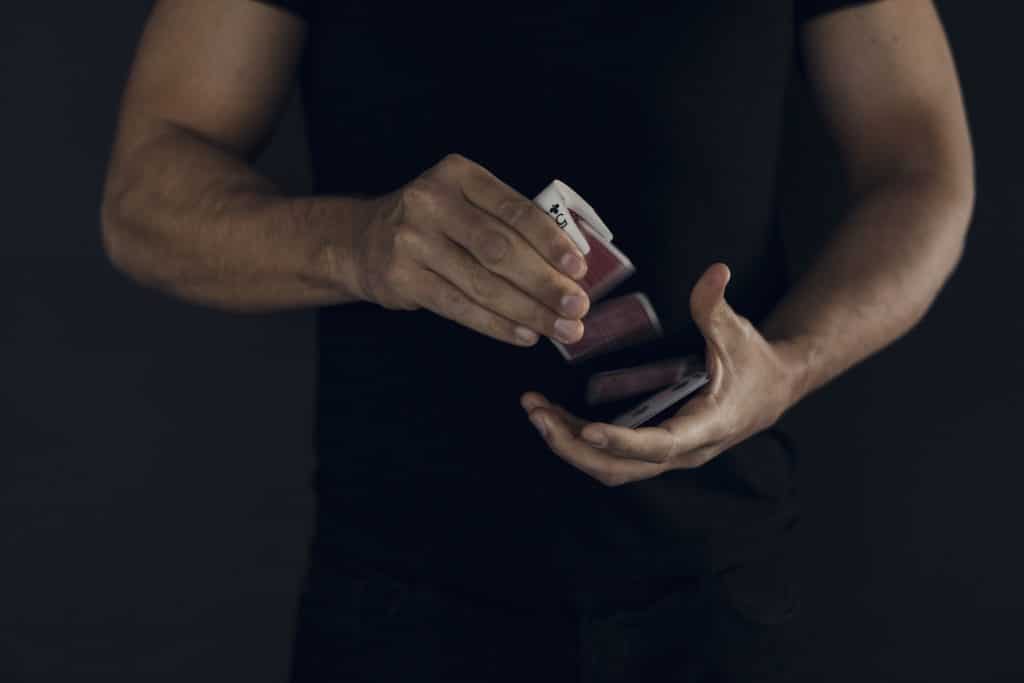
Dealing the Cards
Once the cards are shuffled, they need to be dealt to the players. Proper positioning and technique are essential to ensure a fair and efficient game.
Proper Positioning:
The dealer is responsible for dealing the cards. In most poker games, the dealer’s position rotates around the table in a clockwise direction. The dealer’s position is marked by a “dealer button,” which is a small disc that is placed in front of the player who is dealing the cards.
Different Dealing Styles:
There are several different dealing styles in poker, each with its advantages and disadvantages. The most common styles are the American and European styles.
- American Style: In the American style, the dealer deals two cards to each player, face down. The cards are then followed by a round of betting. After the betting round, three community cards are dealt face up on the table. This is followed by another round of betting. Then, a fourth community card is dealt face up, followed by another betting round. Finally, a fifth community card is dealt face up, followed by a final round of betting. The player with the best five-card hand wins the pot.
- European Style: In the European style, the dealer deals two cards to each player, face down. The cards are followed by a round of betting. Then, three community cards are dealt face up on the table, followed by another round of betting. After the betting round, a fourth community card is dealt face up, followed by another betting round. Finally, a fifth community card is dealt face up, followed by a final round of betting. The player with the best five-card hand wins the pot.
Dealing the Cards:
To deal the cards, the dealer starts with the player to their left and deals one card face down to each player, one at a time, in a clockwise direction. The dealer then deals a second card face down to each player, again in a clockwise direction. The cards should be dealt quickly and efficiently to avoid any confusion.
In summary, proper positioning and technique are essential when dealing the cards in poker. The American and European styles are the most common dealing styles, each with its advantages and disadvantages. The dealer should deal the cards quickly and efficiently to avoid any confusion.
Card Manipulation
Card manipulation, also known as cardistry, is the art of performing skillful and intricate movements with playing cards. While not necessary for gameplay, card manipulation can add flair and style to a player’s gameplay.
Basic Card Manipulation Techniques:
There are several basic card manipulation techniques that players can learn to add a bit of flair to their gameplay. These include:
- Card Fans: Card fans involve fanning out a deck of cards in a circular motion. This technique is often used as a way to display a deck of cards or as a way to build suspense during a game.
- Card Flourishes: Card flourishes are more complex movements that involve manipulating cards with one or both hands. These can include cuts, shuffles, and spins, and are often used as a way to impress other players or add style to a player’s gameplay.
Advanced Card Manipulation Techniques:
For those looking to take their card manipulation skills to the next level, there are several advanced techniques to learn. These include:
- One-Handed Cuts: One-handed cuts involve manipulating a deck of cards with one hand, often involving complex movements and spins.
- Card Springs: Card springs involve holding a deck of cards in one hand and releasing them to create a spring-like effect. This technique requires practice and dexterity to perform effectively.
- Card Palming: Card palming involves hiding a card in the palm of one’s hand, allowing the player to manipulate the cards in a way that appears impossible.
Importance of Card Manipulation:
While card manipulation is not necessary for gameplay, it can add a level of skill and style to a player’s game. The ability to manipulate cards can also be used to distract other players or build suspense during a game.
In summary, card manipulation involves performing skillful and intricate movements with playing cards. Basic techniques include card fans and card flourishes, while more advanced techniques include one-handed cuts, card springs, and card palming. While not necessary for gameplay, card manipulation can add flair and style to a player’s gameplay and can be used to distract other players or build suspense during a game.
Conclusion
The art of card handling in poker involves more than just shuffling and dealing. It also includes the skillful manipulation of playing cards through techniques such as card fans, card flourishes, one-handed cuts, card springs, and card palming. While these techniques are not necessary for gameplay, they can add a level of style and flair to a player’s gameplay.
To master the art of card handling, practice is essential. Regularly practicing shuffling, dealing, and card manipulation techniques can improve a player’s skills and add a level of dexterity and coordination. By incorporating these skills into regular gameplay, players can add style to their gameplay while also improving their abilities.
Overall, mastering the art of card handling in poker requires dedication, patience, and practice. By putting in the effort to hone these skills, players can improve their gameplay and add a level of style and flair that will impress other players at the table.

